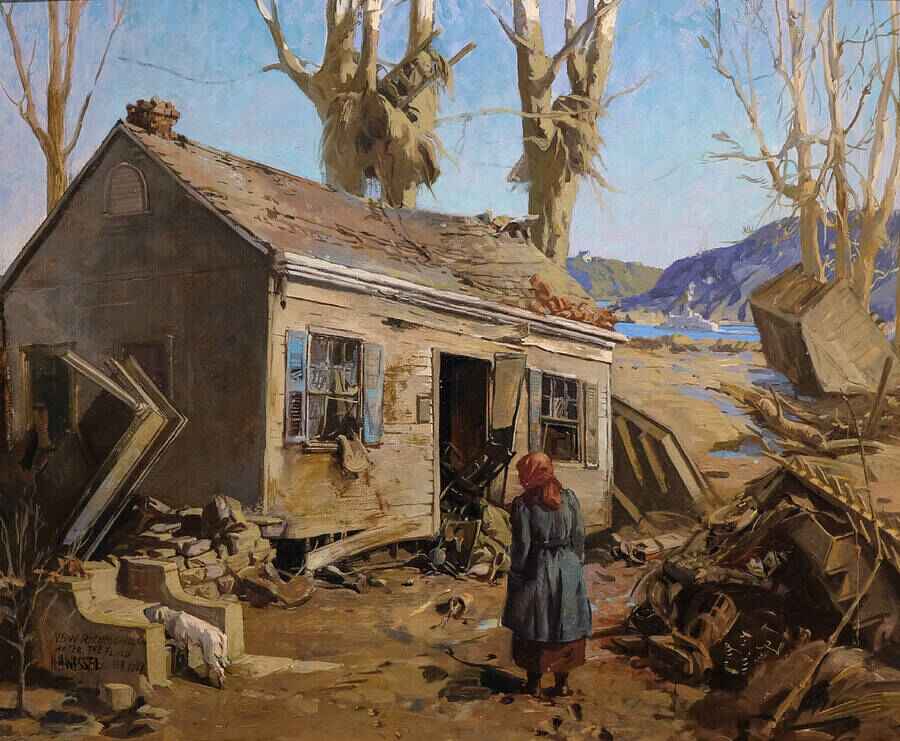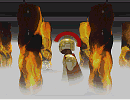Genius Loci [Latin] - Spirit of Place
The divine is in the earth, the sky, and all that dwells within. - Adapted from modern Pagan wisdom, reflecting reverence for nature
Origins and History
Paganism, broadly defined, refers to pre-Christian, polytheistic, or animistic spiritual traditions rooted in ancient cultures worldwide, such as those of Europe, the Mediterranean, and the Near East. Neopaganism, a modern revival, emerged in the 19th and 20th centuries, drawing inspiration from these ancient practices, folklore, and esoteric movements. Key influences include Romanticism’s idealization of nature, the 19th-century occult revival (e.g., the Hermetic Order of the Golden Dawn), and 20th-century movements like Wicca, founded by Gerald Gardner in the 1940s in England. Neopaganism grew amid countercultural and environmental movements, appealing to those seeking earth-centered spirituality. Ancient Pagan traditions, like those of the Celts, Norse, or Greeks, were largely supplanted by Christianity, but Neopaganism reimagines them through archaeology, mythology, and creativity. Today, Paganism/Neopaganism has millions of adherents globally, with estimates ranging from 1–5 million, concentrated in North America, Europe, and Australia, though precise numbers are hard to pin down due to its decentralized nature.
Core Beliefs
Paganism/Neopaganism is highly diverse, often polytheistic, animistic, or pantheistic, but shares common themes:
- Reverence for Nature: The earth and its cycles are sacred, with natural phenomena (e.g., seasons, elements) embodying divine forces.
- Polytheism or Pantheism: Many honor multiple deities (e.g., Celtic Brigid, Norse Odin) or view divinity as immanent in all things; some are monistic, seeing a single divine source.
- Personal Spirituality: Practitioners emphasize direct experience of the divine through ritual, meditation, or intuition, often rejecting dogma.
- Cycle of Life: The Wheel of the Year, based on seasonal festivals, reflects birth, death, and renewal, aligning with nature’s rhythms.
- Magic and Energy: Many believe in manipulating spiritual or natural energies through rituals, spells, or divination (e.g., tarot, runes).
- Ethical Flexibility: Common principles include “An it harm none, do what ye will” (Wiccan Rede), emphasizing personal responsibility and harmony.
Pagans/Neopagans aim to live in balance with nature, fostering personal growth and connection to the divine through creative, individualized practices.
Practices
Pagan/Neopagan practices vary widely but center on ritual, community, and nature:
- Seasonal Festivals: The Wheel of the Year includes eight Sabbats, like Samhain (honoring the dead) and Beltane (celebrating fertility), marked by rituals, feasts, or bonfires.
- Rituals and Magic: Practitioners cast circles, invoke deities, or perform spells using tools like athames (ritual knives), wands, or altars, often in covens or as solitaries.
- Divination and Meditation: Tools like tarot, runes, or scrying connect practitioners to spiritual insights; meditation fosters communion with the divine.
- Sacred Sites: Natural places (e.g., Stonehenge, forests) or reconstructed sites are used for worship, pilgrimage, or rituals.
- Rites of Passage: Ceremonies like handfastings (marriages) or naming rituals mark life transitions, often tailored to personal or cultural traditions.
- Community Gatherings: Festivals, like Pagan Pride events, or online forums foster connection, though many practice alone.
These practices integrate spirituality into daily life, emphasizing creativity, nature, and personal empowerment.
Sacred Texts
Paganism/Neopaganism lacks a single canonical text, relying instead on mythology, folklore, and modern writings:
- Mythological Sources: Ancient texts like the Norse Eddas, Greek Homeric Hymns, or Celtic Mabinogion inspire beliefs and rituals.
- Modern Writings: Influential works include Gerald Gardner’s Witchcraft Today (Wicca), Starhawk’s The Spiral Dance (ecofeminist Paganism), and Margot Adler’s Drawing Down the Moon (overview of Neopaganism).
- Book of Shadows: Many Wiccans and Pagans maintain personal or group ritual books, compiling spells, prayers, and reflections.
- Oral and Creative Traditions: Stories, chants, and rituals, often composed anew, serve as living “texts” shared in communities.
These sources are treated as inspirational, not dogmatic, with practitioners encouraged to adapt or create their own spiritual resources, reflecting the faith’s emphasis on personal experience.
Denominations and Diversity
Paganism/Neopaganism is a broad umbrella with numerous traditions:
- Wicca: A prominent Neopagan path, emphasizing witchcraft, duotheism (God and Goddess), and ritual magic, with branches like Gardnerian and Alexandrian.
- Druidry: Inspired by Celtic spirituality, focusing on nature, poetry, and ancestral wisdom, often practiced in groves.
- Heathenry/Asatru: Reconstructionist traditions honoring Norse/Germanic deities, emphasizing honor, community, and historical texts.
- Hellenism: Revival of ancient Greek religion, venerating Olympian gods through classical rituals.
- Eclectic Paganism: Blending elements from multiple traditions, common among solitary practitioners.
Cultural variations exist, with Pagans in Europe emphasizing local folklore and those in the Americas incorporating Indigenous or global influences (with sensitivity to appropriation concerns). Despite diversity, shared values like nature reverence and personal freedom unify the movement.
Worship and Community
Worship occurs in natural settings, home altars, or communal spaces like festivals or covens. Rituals, led by practitioners or trained clergy (e.g., Wiccan High Priests/esses), involve invoking deities, chanting, or offerings, fostering spiritual connection. Communities range from tight-knit covens to loose networks at events like Burning Man or Pagan Spirit Gathering. In urban or diaspora settings, Pagans maintain identity through online forums, social media groups, or interfaith initiatives. Digital platforms, such as virtual rituals or Pagan blogs, expand access to teachings, emphasizing inclusivity and shared celebration of nature’s cycles.
Art and Cultural Practices
Pagan/Neopagan art is vibrant and symbolic, reflecting spiritual themes. Examples include Wiccan pentacle jewelry, Druidic ogham carvings, or Heathen runestones. Music, like folk songs or drumming circles, enhances rituals, while poetry and storytelling convey myths. Visual art, such as paintings of deities or mandalas, serves devotional purposes. Modern expressions include Pagan-themed films, novels, or digital art. Sacred symbols, like the triple moon or Thor’s hammer, are worn or displayed, not worshipped, avoiding idolatry. Cultural practices, such as seasonal feasts or craft-making, reinforce community and connection to the earth, blending ancient inspiration with modern creativity.
Early vs. Later Teachings
Ancient Paganism varied by culture, focusing on localized deities, seasonal rites, and oral traditions, as seen in Celtic sacrifices or Norse blóts. Neopaganism, emerging in the 20th century, reinterpreted these through modern lenses, emphasizing ecological awareness, gender equality, and personal empowerment. Early Wicca, for instance, focused on esoteric rituals, while later forms embraced feminist and environmental themes (e.g., Reclaiming tradition). Modern Paganism addresses contemporary issues like climate change or social justice, adapting ancient reverence for nature to global challenges while retaining a focus on spiritual freedom and ritual practice.
Persecution and Challenges
Ancient Pagans faced suppression with the spread of Christianity, with temples destroyed and practices outlawed. Neopagans have faced modern prejudice, often stereotyped as “satanic” or frivolous, particularly in conservative regions. In the 1980s, the “Satanic Panic” in the U.S. targeted Pagans, leading to social stigma. Challenges include legal recognition (e.g., for Pagan clergy or holidays), cultural appropriation debates (e.g., borrowing from Indigenous traditions), and internal disputes over authenticity or gatekeeping. Pagans counter these through education, advocacy (e.g., Pagan Pride), and interfaith dialogue, emphasizing their ethical and ecological contributions.
Controversies and Modern Debates
Paganism/Neopaganism faces debates over cultural appropriation, with some practitioners criticized for adopting Indigenous or closed cultural elements without permission. Reconstructionists (e.g., Heathens) debate historical accuracy versus modern adaptation, sometimes clashing with eclectic Pagans. Issues of inclusivity arise, with some groups addressing racism or transphobia within the movement (e.g., Heathenry’s rejection of white supremacist misappropriations). Gender dynamics vary, with feminist Paganism empowering women, while traditionalist groups may resist change. Digital sharing of rituals raises concerns about secrecy versus accessibility. Pagans navigate these through community dialogue, ethical guidelines, and efforts to honor diverse perspectives.
Contemporary Context
Paganism/Neopaganism thrives globally, with vibrant communities in urban centers like London, Seattle, and Sydney, as well as rural retreats. Festivals, covens, and online platforms, like The Wild Hunt news site or Pagan Discord servers, foster connection and education. The emphasis on nature aligns with environmental activism, such as Pagan-led rewilding projects or climate protests. Interfaith initiatives and public events, like Pagan Pride Days, promote understanding. Challenges include overcoming stereotypes, sustaining growth amid secularism, and addressing appropriation. Paganism’s flexible, earth-centered spirituality resonates in a world seeking ecological and personal renewal, making it a vital voice in global spiritual discourse.









